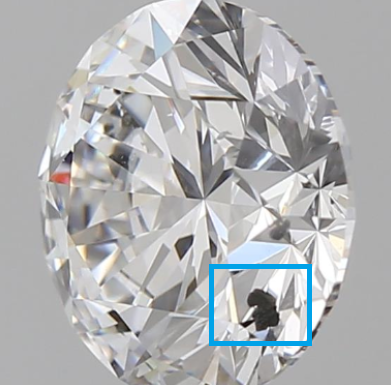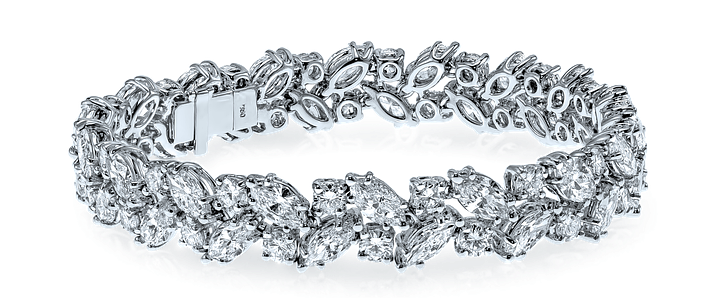The High Value and Vulnerability of Natural Diamonds
Natural diamonds have long been revered not only for their beauty but also for their intrinsic and monetary value. These gemstones, formed over billions of years under immense geological pressure, are considered one of the most enduring symbols of wealth and status. However, despite their durability in terms of hardness, natural diamonds are not immune to risk. They can be lost, stolen, or damaged, which makes insuring them a prudent measure for any owner. Whether purchased as an engagement ring, a family heirloom, or a high-value investment, diamonds represent significant financial and emotional stakes. A single incident—such as theft from a home, misplacement during travel, or accidental damage—can result in substantial financial loss. Unlike other possessions, diamonds are small, portable, and easily concealed, which unfortunately also makes them prime targets for theft. Furthermore, changes in market prices can influence replacement costs, emphasizing the need for an insurance policy that reflects current valuations. These factors all contribute to the critical importance of considering comprehensive insurance for any natural diamond you own.

Types of Insurance Policies Available for Natural Diamonds
There are several types of insurance coverage available for natural diamonds, each offering different levels of protection depending on the policyholder’s needs and budget. The most basic form of coverage is often found within standard homeowners or renters insurance. These policies typically offer limited protection for jewelry items, including diamonds, with caps that can be as low as $1,000 to $2,500. This coverage is often subject to deductibles and may only apply in cases of theft or fire, excluding more common issues like accidental loss or damage. As such, many policyholders opt for a rider or endorsement—an add-on to an existing homeowners or renters policy—which specifically covers valuable items like diamonds. However, even riders may come with certain restrictions or limitations. For those seeking more robust protection, standalone jewelry insurance is another option. Offered by specialized providers, these policies tend to cover a wider range of risks, including mysterious disappearance, damage, and loss while traveling. Standalone policies also often provide more flexibility when it comes to claims handling, valuation methods, and replacement procedures. Understanding the different policy types and their coverage scope is essential for making an informed decision about how best to protect your diamond.
Importance of Professional Appraisal and Documentation
Proper valuation of your diamond is crucial when seeking insurance coverage. Insurance companies require a formal appraisal to determine the current market value of the diamond and to establish the appropriate amount of coverage. A professional appraisal provides a detailed analysis that includes the diamond’s weight (carats), cut, clarity, color, and overall quality. It also often includes high-resolution photographs and a thorough description of the setting if the diamond is part of a piece of jewelry. This documentation not only supports the insurance application but also becomes indispensable in the event of a claim. Without a certified appraisal, you may be underinsured or find yourself unable to justify the diamond’s worth to your insurer. Ideally, appraisals should be conducted by a certified gemologist or a reputable jeweler who adheres to recognized industry standards such as those of the Gemological Institute of America (GIA) or the American Gem Society (AGS). Additionally, appraisals should be updated every two to five years to reflect market fluctuations and changes in the condition of the diamond. Keeping appraisal documents, purchase receipts, and any laboratory certificates in a secure and accessible location—such as a safe or cloud storage—can further streamline the claims process.
Key Policy Features to Evaluate Before Purchasing Coverage
When comparing diamond insurance policies, it’s essential to examine several critical features to ensure you’re receiving comprehensive protection. First, assess the types of loss covered—does the policy include accidental loss, theft, damage, or mysterious disappearance? Some insurers exclude scenarios such as damage from wear and tear or loss while traveling internationally. Second, consider the method of valuation and reimbursement. Policies may either provide replacement value, where the insurer replaces your diamond with one of similar quality, or cash value, which reimburses you based on depreciated value or the original purchase price. Replacement value policies are generally preferred for high-value items like diamonds. Third, examine the deductible—some policies offer zero-deductible options, while others require a fixed amount to be paid out-of-pocket before coverage applies. The claims process is another important factor; insurers with streamlined, transparent claims handling often make it easier to get your diamond replaced or reimbursed quickly. Also look into the geographical scope of the coverage—whether it applies only within your home country or includes international protection. Additional services like worldwide coverage, automatic value adjustment, and access to expert gemologists for replacement guidance can add value to your policy. Reading the fine print and consulting with an insurance advisor can help clarify these critical components before you commit.

The Role of Specialized Jewelry Insurance Providers
While general insurers can offer basic protection, specialized jewelry insurance providers often deliver a more tailored and robust approach for insuring natural diamonds. These companies focus specifically on the unique risks associated with high-value gemstones and luxury jewelry. Unlike traditional insurers, these providers typically offer broader coverage that includes accidental loss, damage during cleaning or maintenance, mysterious disappearance, and theft—both at home and while traveling. Additionally, their claims departments are often staffed by professionals with expertise in gemology and jewelry repair, ensuring a more accurate and fair handling of claims. Many specialized providers also give policyholders the flexibility to work with their preferred jeweler or to select from a curated list of vetted professionals for repairs and replacements. This ensures consistency in the quality of craftsmanship and allows the policyholder to retain as much of the original value as possible. Furthermore, specialized insurers usually allow for easy annual value updates based on appraisals or market trends, which helps avoid underinsurance. These benefits make dedicated jewelry insurance providers a compelling choice for individuals who own high-carat diamonds, custom pieces, or collections of gemstones that far exceed the standard limits of homeowners insurance.
Considerations for Storing and Transporting Insured Diamonds
Even with insurance in place, risk mitigation through secure storage and responsible transport is essential. Insurers may offer lower premiums or favorable terms to clients who demonstrate proactive loss prevention. For home storage, this often means using a high-security safe that meets specific burglary and fire-resistance ratings. Diamonds kept in a bank safety deposit box are often regarded as being at the lowest risk of theft or loss, which may translate into further insurance savings. For pieces worn regularly, insurers may still expect reasonable precautions such as storing the item in a locked box when not in use. When transporting insured diamonds—especially internationally—it is advisable to carry a copy of the appraisal and insurance documents, and to notify your insurer ahead of time if extended travel is involved. Some policies exclude international coverage unless specified, so checking the fine print is crucial. Also, using tamper-proof jewelry cases, avoiding unnecessary displays of valuable items in public, and considering GPS tracking in travel cases are all modern methods for minimizing exposure. Insurers may take these practices into account when determining premiums or evaluating claims. Therefore, combining responsible ownership with insurance coverage creates the most effective strategy for protecting natural diamonds.
Costs and Premium Structures of Diamond Insurance
The cost of insuring a natural diamond varies depending on several factors, including the diamond’s appraised value, the level of coverage desired, geographical location, and the insurer’s underwriting policies. On average, insurance premiums for diamonds range between 1% to 2% of the appraised value annually. For example, a $10,000 diamond ring might cost between $100 and $200 per year to insure. However, premiums can be influenced by factors such as higher crime rates in the insured’s location, the frequency of travel with the jewelry, or prior claims history. The type of coverage also impacts the price; policies with no deductible, worldwide protection, or full replacement value will typically carry higher premiums. Some insurers may offer discounts for safe storage, security systems, or bundling with other insurance products. It is essential to request detailed quotes from multiple providers and to compare not just the costs, but also the extent and reliability of coverage. Transparent communication with your insurer about how, when, and where you use the diamond can also ensure a more accurate premium calculation and reduce disputes in the event of a claim.
The Claims Process and Best Practices for Policyholders
Understanding the claims process is just as important as purchasing the right coverage. In the unfortunate event that a loss occurs, prompt and well-documented communication with your insurer can significantly influence the speed and success of your claim. Policyholders should immediately notify the insurer and provide all required documentation, including the original appraisal, proof of purchase, photographs, and a police report if theft is involved. Most insurers will assign a claims adjuster or jewelry expert to assess the documentation and determine the eligibility and value of reimbursement or replacement. Some providers may also require you to use a specific jeweler or repair specialist for replacements. To avoid delays, it’s advisable to maintain a digital file with all relevant documents and photographs. Policyholders should also keep detailed records of maintenance or previous repairs to the item, as this information may be requested during the claims process. Understanding your policy’s timelines for reporting and reimbursement, as well as any conditions that may invalidate coverage, is vital. Being proactive and organized can make a potentially stressful situation far more manageable and ensures that your investment in natural diamonds is adequately protected when it matters most.